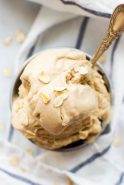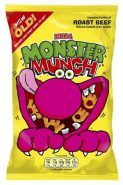I often think of flavourists as scientific artists. Scientists that not only appreciate a wide spectrum of food and drink, but are also fascinated by what causes these products to taste and smell the way they do. Many people do not understand what a flavourist does; put simply, flavourists make food and drinks have an acceptable, and hopefully amazing, taste.
There are 2,000–3,000 flavour compounds currently used by flavourists, and new compounds are being found almost weekly. Learning the flavour chemistry of all types of essential oils including herbs, spices, and citrus oils, is a very important aspect of a flavourist’s training. Also important to learn is how the individual constituent compounds interact with each other. A vital lesson is not only to taste and smell these individual compounds, but to make accurate personal notes that you can refer back to. I remember my own mentor would test me on a weekly basis, checking my ability to differentiate individual flavour compounds.

Besides essential oils, there are many other flavour compounds that flavourists have to familiarise themselves with. The most important groups consist of esters, alcohols, acids, aldehydes, ketones, pyrazines, amines, furans, phenols, terpenes and lactones. Some flavour compounds, especially esters, are found in a wide area of both foods and drinks; ethyl butyrate, for instance, is used in many fruity flavours. Furaneol can be found in many flavours, including strawberries and pineapple, and banana flavour often contains isoamyl acetate. Lactones are useful in many creamy and dairy flavours, and pyrazines are present in various nut and roasted meat profiles. One very important compound is, of course, vanillin. This is used extensively in many applications, especially in ice creams and custard powders.
An important area for a flavourist today is the use of some very sophisticated analytical methods. These include Gas Chromatography Mass Spectrometry (GC- MS), Nuclear Magnetic Resonance Spectroscopy (NMR), and High-Pressure Liquid Chromatography (HPLC). With these techniques, it is relatively easy to identify flavor compounds at extremely low concentrations. Quite often, although these compounds are present in low concentrations, their contribution to the flavour profile can be extremely important.

After all these years I still get a wonderful feeling, knowing that some of the flavours I have created are providing the taste for products on the market, including beef flavoured Monster Munch. Flavours are created for many applications and certainly help companies both large and small make huge profits. Therefore, a flavourists life is always challenging and variable. From potato crisps to yoghurt, from pharmaceuticals to soft drinks, and pet foods to bakery creams. The flavourists imagination and talents will always be the centre of exciting food and drink creations.
Flavour creation is a multibillion-dollar worldwide industry. Flavourists create many different types of flavours be they, natural, artificial, or reaction types. They are often asked to travel extensively, giving presentations to customers, and sometimes simply giving lectures or mentoring. As young flavourists become more and more experienced, they can expect to earn quite substantial salaries, compared with many scientists. Hopefully after reading this article, a few readers will consider following this fascinating profession.
Author
 Geoff Passmore CSci, FIFST, FIScT, FRSC
Geoff Passmore CSci, FIFST, FIScT, FRSC
Geoff originally studied analytical and organic chemistry; whilst at the same time training to become a flavourist. In total his experience has covered about fifty years, and has included working for several of the world’s top flavour companies. He is now a “freelance” master flavour consultant and mentors young flavourists all over the world. Geoff is a Chartered Scientist, a Fellow of the British Society of Flavourists, a Fellow of the Institute of Food Science & Technology, a Fellow of The Royal Society of Chemistry, and a Fellow of he Institute of Science & Technology. Most of Geoff’s flavour creation experience involved applications relating to food and drinks.
